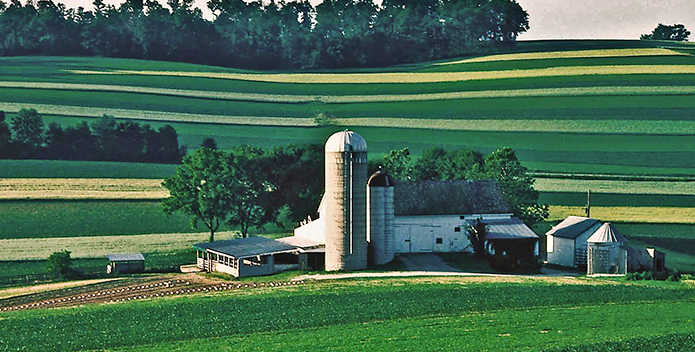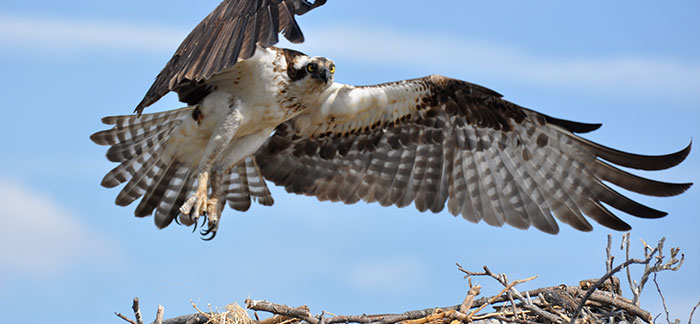-
06 Jul 2018
This Week in the Watershed: Best Bang for Our Buck
The least expensive ways to fight pollution also targets the largest source of pollution—agricultural runoff.
Topics: Conservation, Politics, Water Quality
-
29 Jun 2018
This Week in the Watershed: Bay Building Blocks
Speak of the Chesapeake Bay and thoughts of the mighty oyster or beloved blue crab are not far away. These treasured critters are not only delectable but are critical building blocks for the health of the Bay's ecology.
Topics: Blue Crabs, Conservation, Eastern Oysters, Fisheries, Habitat Loss, Restoration, Water Quality
-
08 Jun 2018
This Week in the Watershed: Investing in Clean Water
When Virginia's General Assembly adjourned in March, there was one item unresolved. There was deadlock on the state budget. But following a lengthy special session, it's clear there is something legislators all agree on: clean water.
Topics: Chesapeake Clean Water Blueprint, Restoration, Virginia's Agricultural Cost-Share Program, Virginia's Stormwater Local Assistance Fund, Water Quality
-
01 Jun 2018
This Week in the Watershed: Halfway There
The history of efforts to clean up the Chesapeake Bay and its rivers and streams are riddled with grand promises, high expectations, and missed deadlines. But the story changed when the Chesapeake Clean Water Blueprint was introduced in 2010.
Topics: Bay Grasses, Blue Crabs, Chesapeake Clean Water Blueprint, Dead Zones, Eastern Oysters, Restoration, Water Quality
-
18 May 2018
This Week in the Watershed: A Little Spark
When Robert Dean was planning the first Clean the Bay Day 29 years ago, his greatest worry was getting enough volunteers to leave the comfort of their homes on a Saturday morning to get dirty and tired picking up trash. But he underestimated the love Virginians have for their waterways.
Topics: Atlantic Coast Natural Gas Pipeline, Community, Conservation, Runoff Pollution, Restoration, Water Quality
-
16 May 2018
Pennsylvania's Ambitious Antidote for Polluted Streams: 10 Million Trees
Larry Herr's contribution is modest: 50 to 75 new young trees, a biological buffer for Silver Creek, which babbles through 76 rolling acres of his farm in Lebanon County, Pennsylvania.
Topics: Chesapeake Clean Water Blueprint, Keystone Ten Million Trees Partnership, Trees
-
11 May 2018
This Week in the Watershed: Threats and Resilience
Like the victim of Chinese water torture, the Chesapeake Bay seems afflicted by a constant stream of assaults, most of them man-made.
Topics: Advocacy, Agriculture, Algal Blooms, Atlantic Coast Natural Gas Pipeline, Blue Crabs, Chesapeake Clean Water Blueprint, Conservation, Habitat Loss, Runoff Pollution, Restoration, Water Quality
-
10 May 2018
Centre County 7th-Graders Learn About Water Quality in Their Own Backyards and the Bay
It was a wet and wild day of outdoor learning at Fox Gap Rod & Gun Club in Centre County, 30 miles east of State College.
Topics: Chesapeake Clean Water Blueprint, Forest Loss, Keystone Ten Million Trees Partnership
-
09 May 2018
This Month on the Bay: A Mahogany Tide in May
Mahogany tides are natural occurrences, but a bloom as widespread and deep as the one that came this week is a serious reminder of how much we have overfertilized our waters with nitrogen and phosphorus.
Topics: About the Bay, Algal Blooms, Bay Grasses, Chesapeake Clean Water Blueprint, Dead Zones, Eastern Oysters, Fisheries, Water Quality
-
04 May 2018
This Week in the Watershed: A Big Dam Problem
It's not often you can see water pollution from space. But a well-known image following Tropical Storm Lee in 2011 has a long, complicated story to tell.
Topics: Advocacy, Conowingo Dam and
Chesapeake Bay, Conservation, Dead Zones, Keystone Ten Million Trees Partnership, Runoff Pollution, Restoration, The Susquehanna River, Water Quality
What's Up in Pennsylvania

State and federal conservation programs provide critical funding and support to farmers who want to incorporate best management practices such as contour stripcropping (shown here), which keep valuable nutrients on farms and out of local streams and the Bay.
Tim McCabe/NRCS


